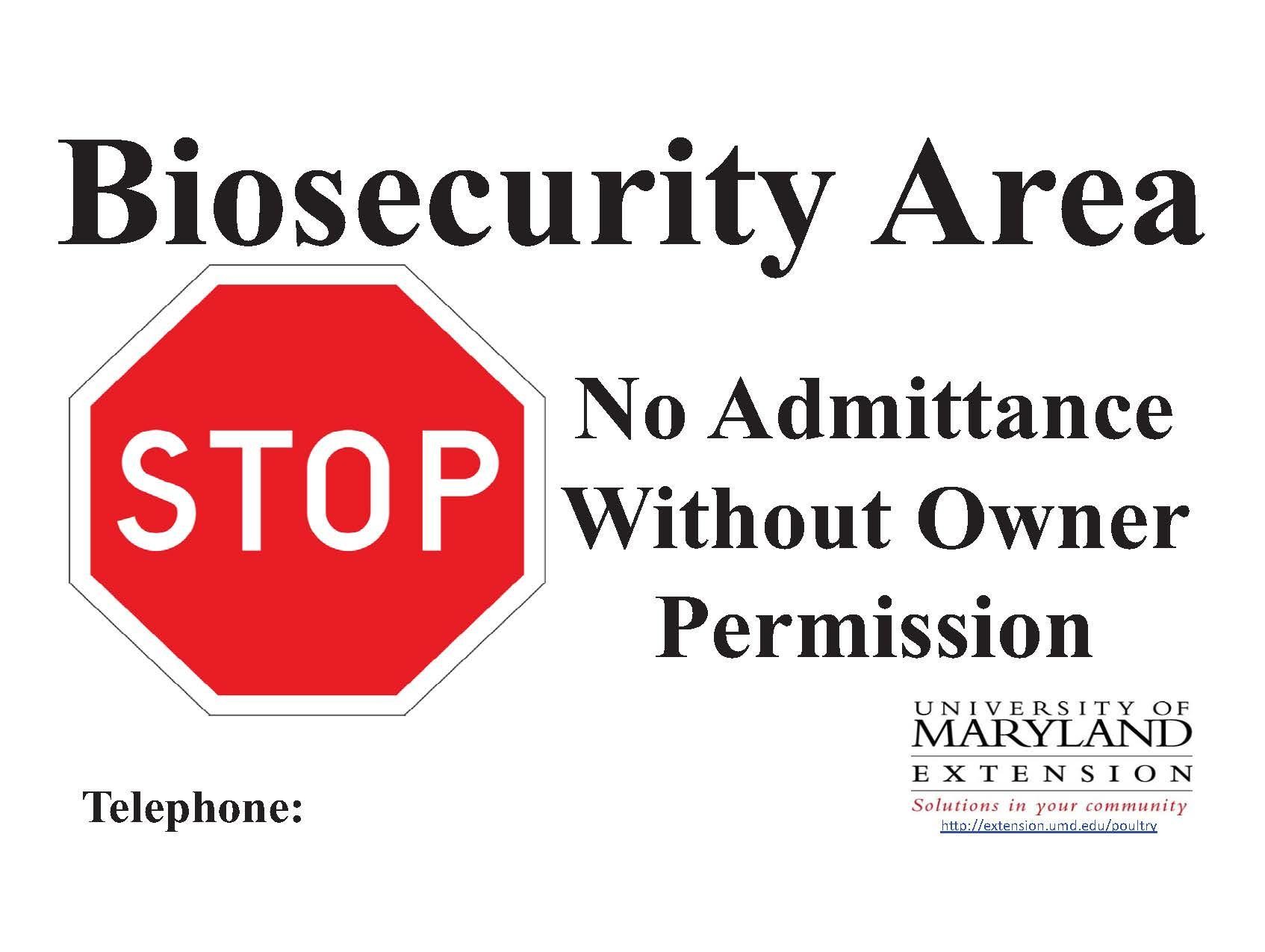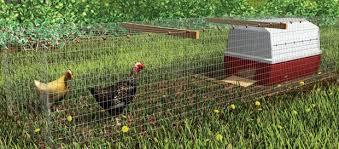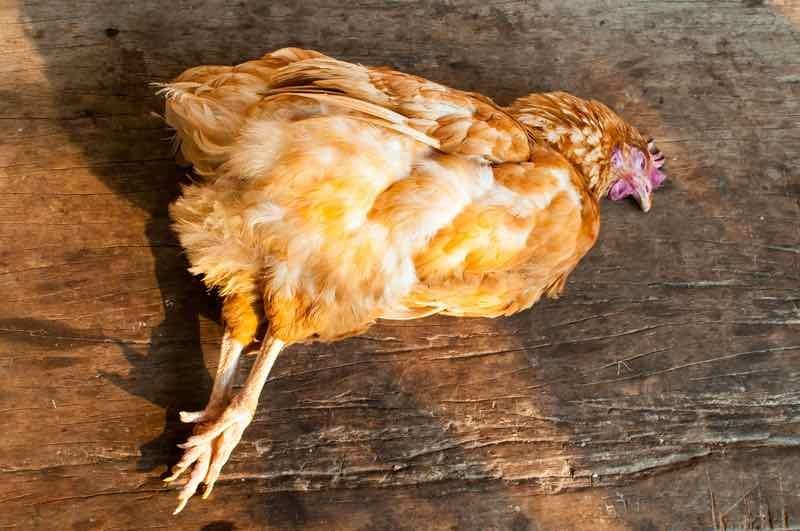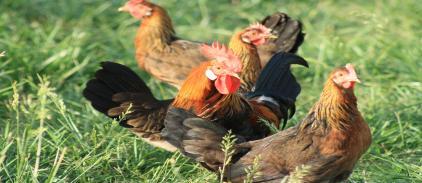Protecting your investment is very important. Early detection and prevention is key to maintaining a healthy flock. It is much easier to prevent disease than to try and eliminate it. Having good biosecurity practices in place, aid in protecting your flock from disease. Biosecurity practices can be achieved while being both productive and profitable at the same time. It is an easy way to protect your birds from harm.
What is Biosecurity?
"Bio" means life. "Security" means protection. Biosecurity is a set of measures designed that are practiced to prevent the spread of disease onto your property and into your flock. Biosecurity planning is a proactive approach to safeguarding the health and productivity of your flock. By having a plan set in place, you are protecting the life of your birds. Biosecurity can easily be incorporated into daily management practices. It is important to assess and periodically adjust your biosecurity practices as needed to your property and flock.
3 Major Requirements for Biosecurity
(Jeffrey, 1997)
1. Isolation
Confining your animals within a controlled environment. This includes keeping other animals out and locking doors on poultry houses (if applicable).
2. Traffic Control
Reducing the amount of traffic onto and around your farm. This includes not only motorized traffic but foot traffic as well!
3. Sanitation
Disinfecting materials, equipment, and people that work on your property.
Biosecurity is a work in progress. You should periodically assess your program and adjust your biosecurity practices as needed to the ever-changing risks (age of birds, types of birds on premises, amount of traffic onto and off property) for your property. Controlling the amount of traffic on your farm is one of the most inexpensive forms of biosecurity than can reduce the chance of disease transmission. Be sure to disinfect all materials, equipment, and people that work on your farm/property. By practicing good biosecurity, you can prevent the spread of disease from humans, vehicles, animals, carcasses, and other flocks that may be traveling onto and around the property.
Biosecurity signs posted at the entrance and around the perimeter of the farm, as well as on buildings and doors, will inform others of your goal of good biosecurity. Below is a typical biosecurity sign.

Backyard Biosecurity Brochure
Isolation
Isolation is used to help prevent the spread of disease. Confinement is the main way to isolate and separate your birds. Many people worry that isolating their birds will be difficult. Isolation is when a bird(s) is separated away from the rest of the flock. It is simple and can be accomplished several ways. The simplest form of isolation is to place the bird(s) in a plastic carrier. You can also isolate birds by putting them in a separate pasture. Make sure that the isolated birds are not close enough to sneeze or cough through the fence onto other birds. The whole purpose of placing the sick bird in its own pasture is so that it cannot make contact with the rest of the flock, potentially causing disease in the rest of the flock. You may need to create an additional barrier (a strand of electric or temporary fence) if the pastures share a side of fence. The most important benefit to isolating sick birds is protecting the rest of your flock from disease. Remember, a healthy flock = a healthy income!
If you own several birds, they need to be separated into flocks according to age (younger flock vs. older flock), especially if multiple flocks are to be kept on the same farm. Older birds will pick at the younger birds, often causing injury. NEVER run a mixed species flock. By mixing species, disease control can be extremely difficult. Confinement is the best way to isolate your birds. Design a type(s) of confinement that fits the needs of your facility.
Isolating your flock is considered being a good neighbor. If you live near a commercial operation, many commercial operators are worried about your small flock making their flocks sick. Birds do not understand property lines and can be a nuisance if they travel onto your neighbor's property. Physical barriers (trees, fencing, gates, and walls) can help keep your birds from traveling off the property.

How to Isolate Birds
- Select an ideal location on your farm. The location should be of easy access to you as a caretaker but restrict visitors from the area. An easy way to accomplish this is to consider building a "barrier fence" around your birds.
- Before setting up a housing area, consider that each bird should have 3 to 3 1/2 feet of floor space. Spacing will vary depending on the type of bird you decide to raise. When planning a layout, keep in mind of future expansion should you decide to increase the size of your flock.
- Determine how you will separate multiple flocks within your facility. Do you want to put up a fence within the confinement area creating separate run areas? Build another confinement area?
Select building material needed for housing. Items and materials often used for housing may include (but are not limited to) dog crates, chicken coops, chicken wire, T-posts, and plywood.
Many supplies can be found at local hardware, lumber, or farm stores. When building your confinement area, it is important to consider that birds have access to shelter which protects them from bad weather. It is also a good idea to cover the top of the enclosure so that birds do not escape and other animals cannot enter.
Controlling Traffic
Controlling traffic on and around the farm can present quite a challenge to flock owners. Yet once implemented, it dramatically reduces the threat of disease. Traffic may include vehicles, people and other animals (such as pets) that move around on the farm. Communicating with personnel who come onto the property about biosecurity measures that have been established is essential. Many people do not practice biosecurity simply because they have not been informed on farm or property procedures. Controlling traffic on the farm is only effective towards biosecurity if practiced correctly and consistently.
People
Have a designated set of work clothes that you wear only when working with your birds. Designated work clothes should not be worn off the farm. Do not allow visitors near birds. If it is necessary for people to visit birds, provide protective outer clothing and disposable plastic footwear before visitors enter the bird area (Carey et al., 1997). Make sure your designated footwear is disinfected with a footbath before entering each bird area (Jeffrey, 2008).
Vehicles
Controlling the amount, as well as, the direction of traffic on the property is one of the most inexpensive forms of biosecurity. Controlling traffic is essential because traffic onto and around the property pose one of the greatest threats to bird health. In a rural community, many people depend on private vehicles to tend to the daily needs of their farm/property and having a separate vehicle only for farm/property use is not feasible. Therefore, maintaining clean vehicles is a must. Post "restricted" signs at drive entrances and near bird areas. This will inform visitors what parts of the property they cannot enter. Also, have vehicles disinfect and scrub down before entering the premises. This ensures that no germs are brought onto your farm accidentally.
Traveling off the Property with your Birds (Jeffrey, 1997)
Traveling to shows and fairs is a fun way to exhibit your birds to other poultry owners. Along with excitement comes responsibility. Show grounds are, unfortunately, excellent areas for diseases to harbor because of the high traffic of people and other poultry. When traveling with your birds, don't forget that biosecurity practiced at home should be practiced away from home as well.
- Use only clean plastic coops for transferring poultry. Do not use wooden crates because they are difficult to clean and can harbor diseases for long periods of time.
- Do not handle other people's birds. You can transfer disease to their birds and vice versa.
- Do not share supplies and tools while at show grounds. Make sure your materials are disinfected routinely during your stay.
- Clean cages or enclosures before placing birds inside.
Make sure your birds do not come in contact with droppings, feathers, dust, or debris from previous birds. Some diseases are able to survive for long periods of time even after the facilities have been left vacant.
Bringing new birds onto the Farm (Carver, 2008)
There may come a time when you want to increase the size of your flock. Two ways to increase the size of your flock is: 1.) allowing chicks to mature and 2.) buying new fowl. Caution should be exercised if you decide to buy new birds. New birds present the greatest risk to biosecurity because their disease history and exposure is unknown (Jeffrey, 1997). Guidelines to follow when buying new birds include:
- Buy all new stock from a supplier/breeder that participates in USDA's National Poultry Improvement Plan (NPIP). This ensures new birds have been tested free from certain diseases.
- Isolate new birds for 30 days to make sure that no signs of disease appear.
- Confine or fence in ALL flocks. Do not allow wildfowl to come in contact with your birds.
- Feed and care for your original flock first. Wash hands between working different flocks, then tend to new birds.
- Maintain a separate set of clothes to wear when caring for new birds that are confined. Also, use separate tools and supplies when feeding or cleaning new birds.
If you buy a new species of bird to add to your flock, DO NOT mix different species within the same flock. Different species should be raised in separate flocks or separate within enclosures. Mixing species quickly leads to an increase in disease transfer between birds.
References:
Carey, J.B. Prochaska, J.F. and Jeffrey, J.S. 1997 Poultry Facility Biosecurity. Texas Agriculture Extension Service - The Texas A&M University system. Publication L-5182. htpp://gallus.tamu.edu/depts/poulsci/tech-manuals/preventing_avian_influenza_backyard.pdf. Accessed June 2008.
Carver, D.K. 2008 Biosecurity for Backyard Flocks. NC State University Extension Services. http://www.ces.ncsu.edu/depts/poultsci/ tech_manuals/preventing_avian_influenza_backyard.pdf. Accessed June 2008.
Jeffrey, J.S. 1997. Biosecurity for Poultry Flocks. University of California, Davis, School of Veterinary Medicine. www.vetmed.ucdavis.edu/vetext/INF-PO_Biosecurity.html. Accessed Feb. 2007.
Disinfectants and Sanitation
Disinfectants are agents applied to non-living objects to reduce the number of unwanted microorganisms to a safe level. Using disinfectants should be a routine part of daily farm sanitation. Sanitation includes the substances or methods used to destroy microorganisms in order to maintain a healthy, disease-free environment. Sanitation methods prevent unwanted organisms from coming back after disinfectants have been applied.
There are several different types of disinfectants and sanitation methods that can be used to prevent disease and destroy pathogens that are present. Using disinfectants and sanitation methods on your property is a very important step in biosecurity. Disinfectants aren't a guarantee for eradicating disease but are very effective at reducing the risk. Majority of disinfectants cannot work on top of dirt, manure, or organic material, so be sure to thoroughly clean surfaces before application. Make sure you allow enough contact time when applying (follow instructions) for the disinfectant to be effective. Sanitizing or disinfectant compounds can be chemical or non-chemical.
There are various types of disinfectants available to small flock owners. Selecting a disinfectant for your farm can be overwhelming with all the available options. It is strongly encouraged to use disinfectants in conjunction with sanitation methods because disinfectants destroy germs, thus stopping the spread of disease. There are advantages and disadvantages in using different disinfectants. Selecting a disinfectant(s) is based on individual farm needs, as well as the characteristic of the disinfectant.
Recommended Disinfectants
There are certain characteristics that should be kept in mind when choosing a type of chemical sanitation or disinfectant to use. Regardless of the situation, the efficacy (the way the disinfectant kills the pathogen) and toxicity to animals are always important traits to keep in mind when selecting a disinfectant.
Even with all the disinfectants available, natural agents work very well in conjunction with sanitation practices. Natural agents are non-chemical disinfectants that are found in nature. Examples of natural agents include drying, temperature, heat, freezing, and sunlight. Drying and sunlight are very effective in killing many disease-causing pathogens.
Sanitation also includes keeping litter, equipment, and people disease free. The bird area(s) should always be clean. Scrub buckets, feeders, and waterers as well as supplying fresh litter when old litter becomes dirty. Special care should be taken to ensure your birds are raised in a clean environment, especially for young birds. After working with your birds, don't forget to clean equipment every time. If borrowing equipment, be sure to clean and disinfect equipment before entering the bird area especially if it is borrowed from a fellow poultry owner. In addition, make sure every person caring for birds has a set of designated clothing that is not worn off the farm and is washed periodically.
Footbaths
A footbath is a very simple form of biosecurity that helps prevent the potential spread of disease. Organisms have the potential to survive for several days or weeks in the dirt stuck to the bottom of your shoes. Footbaths can eliminate these organisms.
Depending on the amount of traffic on your farm, it may be necessary to have more than one footbath. Be sure that materials are provided at every footbath. Do not share scrub brushes between separate footbaths. There are several recommended disinfectants to use in footbaths.
Most disinfectants can be ordered from your local feed store or online. Remember, some disinfectants may be inactivated by sunlight so be sure to follow directions on the label carefully on how to mix and maintain an active disinfectant (USDA, 2002; McCrea et al., 2008).
Materials for a Footbath
(McCrea et al., 2008)
- Long handle scrub brush
- "Fake grass" or a synthetic bristled doormat
- Hose for mixing new batches of disinfectants
- Tray with short sides (ex. litter pan). Depending on the location and/or type of disinfectant used, you may want to have a lid for the tray to prevent contamination or inactivation of the disinfectant.
Setting Up a Footbath
It may be a good idea to set the footbath up on a solid surface, such as concrete, bricks, or cement blocks to prevent mud around the footbath area. A solid surface can be swept or washed down to eliminate the buildup of dirt that can pollute your footbath. Mud quickly pollutes your footbath, making it useless in providing protection. Location is the most important key in setting up your footbath. Select a location where everyone who comes onto your farm must pass through.
- Place container in selected location.
- Cut mat to fit inside the container.
- Mix disinfectant according to label and add to container.
- Hang long handled brush within reach.
- Post footbath directions at eye level explaining how to use footbath.
Maintaining a Footbath
Make sure to maintain a "clean" footbath. Footbaths should be changed and cleaned periodically. How often you clean your footbath depends on how much foot traffic you have on your farm. On average, footbaths require weekly cleaning. The empty container and mat should be scrubbed with a brush and rinsed thoroughly. Next, add fresh disinfectant and place the mat back into the container. Do not empty the footbath in an area where the footbath is used so that a dry area around the footbath can be maintained (USDA, 2002; McCrea et al., 2008). Don't forget to post directions near footbaths instructing users how to correctly wash footwear.
References: McCrea, B.A., and Bradley, F.A. 2008 Footbaths for Animal Facilities: Easier than you think. University of California-Division of Agriculture and National Resources. Publication 8281.
USDA. 2002. Biosecurity Footbaths for Exotic Newcastle Disease Information for Bird Owners. California Department of Food and Agriculture. www.cdfa.ca.gov/ahfss/Animal_Health/pdfs/Footbaths_owner_Dec02.pdf. Accessed May 2008.




